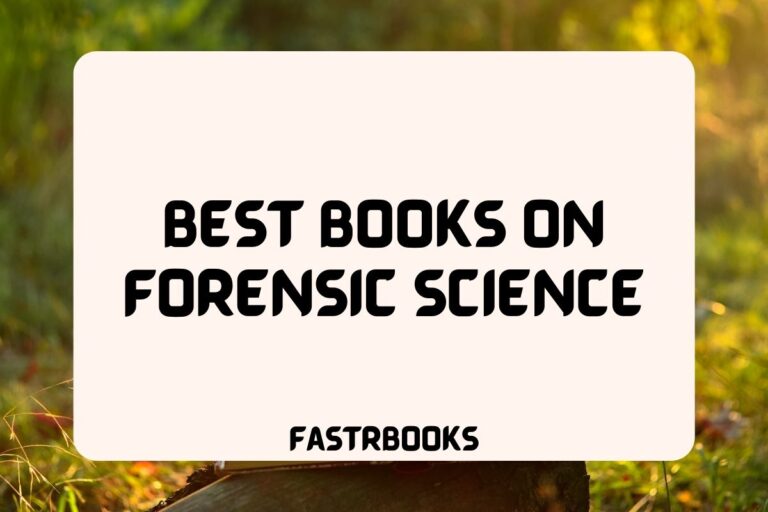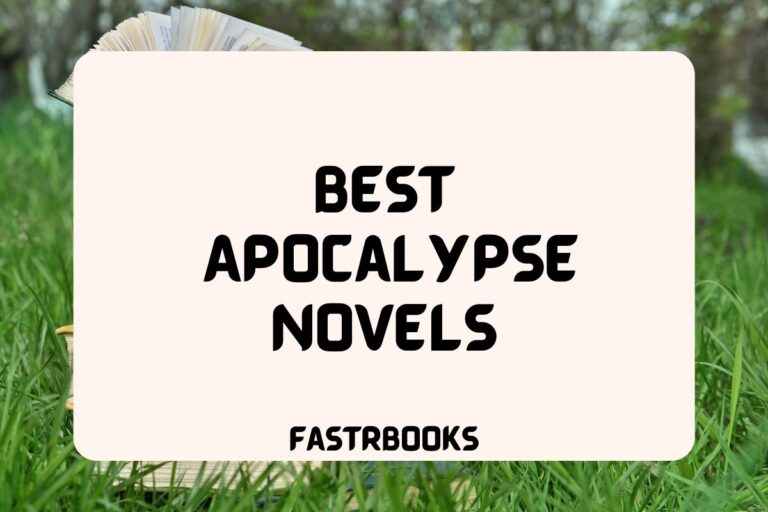21 Best True Crime Books
From infamous cold cases to psychological thrillers based on real events, the true crime genre offers a perfect blend of mystery, intrigue, and often, a profound exploration of the human psyche.
In this blog, we delve into a curated list of the best true crime books that have left readers spellbound, shedding light on the complexities of crime and the pursuit of justice.
Whether you’re a seasoned aficionado or a newcomer to the genre, these books are sure to immerse you in tales of suspense, mystery, and the eternal quest for truth.
Best True Crime Books
1. In Cold Blood by Truman Capote
“In Cold Blood” is a pioneering work that merges journalistic detail with the narrative depth of a novel, setting a new standard for true crime literature. Truman Capote delves into the 1959 murder of the Clutter family in Holcomb, Kansas, drawing on extensive research and interviews.
The book not only explores the impact of the crime on the community but also delves deeply into the psyches of the killers, Richard Hickock and Perry Smith, offering a chilling glimpse into the human capacity for violence.
What makes it amazing?
Capote’s innovative approach to storytelling, where factual accuracy meets literary craftsmanship, makes “In Cold Blood” a masterpiece. The depth of character analysis, the atmospheric setting, and the suspenseful narrative offer a compelling look at American life and criminality.
Capote’s empathetic yet objective portrayal of both the victims and the murderers set a new bar for true crime, influencing generations of writers.
2. Helter Skelter by Vincent Bugliosi with Curt Gentry
“Helter Skelter” provides a definitive account of the prosecution of Charles Manson and his followers for the 1969 Tate-LaBianca murders. Written by Vincent Bugliosi, the prosecutor in the Manson trial, with Curt Gentry, the book details the investigation, trial, and the bizarre cult dynamics that led to the infamous murders.
It offers an unprecedented look at Manson’s twisted ideology and the chilling grip he held over his followers.
What makes it amazing?
The book’s strength lies in Bugliosi’s insider perspective, combined with meticulous research and compelling narrative. “Helter Skelter” not only recounts the events leading up to and following the murders but also explores the legal and psychological complexities of the case.
It’s a harrowing, detailed, and gripping read that captures the horror and fascination of one of the most notorious crimes in American history.
3. The Stranger Beside Me by Ann Rule
“The Stranger Beside Me” is a unique and deeply personal account of Ted Bundy, one of America’s most infamous serial killers. Ann Rule, who knew Bundy personally before his arrest, uses her firsthand experience to offer insight into his deceptive charm and the double life he led.
The book spans the entirety of Bundy’s criminal career, detailing his capture, escapes, trials, and execution, while also reflecting on the nature of evil and the facade of normalcy that Bundy was able to maintain.
What makes it amazing?
What sets this book apart is Rule’s personal connection to Bundy, providing a perspective unlike any other true crime narrative. Her ability to blend a rigorous investigation with her own reflections and experiences offers a unique and haunting look at both the man and the monster.
This blend of personal narrative and true crime investigation offers readers a complex, unsettling view of Bundy and the devastating impact of his crimes.
4. I’ll Be Gone in the Dark by Michelle McNamara
“I’ll Be Gone in the Dark” is a compelling and obsessive investigation into the identity of the Golden State Killer, responsible for a series of rapes and murders in California during the 1970s and 1980s.
Michelle McNamara, a true crime journalist, dedicated years to unmasking the killer, combining traditional detective work with modern technology. Published posthumously, the book is a testament to McNamara’s dedication, blending personal narrative, meticulous research, and evocative writing to create a suspenseful and haunting narrative.
What makes it amazing?
McNamara’s writing is both beautiful and haunting, offering a vivid portrayal of both the crimes and her journey to solve them. Her ability to humanize the victims and convey the sheer scope of the Golden State Killer’s impact, combined with her own poignant personal reflections, makes the book a gripping and emotional read.
The fact that the book played a role in reigniting interest in the case, leading to the eventual identification and arrest of the Golden State Killer, adds to its significance.
5. Mindhunter: Inside the FBI’s Elite Serial Crime Unit by John E. Douglas and Mark Olshaker
“Mindhunter” explores the early days of criminal profiling at the FBI, as told by John E. Douglas, one of the pioneers of the practice. The book details Douglas’s interviews with some of the most notorious criminals of his time, including Ted Bundy and Charles Manson, offering insights into the minds of serial killers and the development of profiling techniques.
Through a series of gripping case studies, Douglas demonstrates how understanding the psychology of killers can lead to their capture.
What makes it amazing?
Douglas’s firsthand experiences, combined with Olshaker’s writing, provide an enthralling look into the FBI’s investigative processes and the genesis of criminal profiling.
The book’s detailed case studies not only shed light on the minds of serial killers but also highlight the challenges and breakthroughs in profiling. “Mindhunter” offers an unprecedented glimpse into the dark corners of criminal behavior, making it a foundational text in the field of criminal psychology.
6. The Devil in the White City by Erik Larson
“The Devil in the White City” masterfully intertwines the story of Daniel H. Burnham, the architect behind the 1893 Chicago World’s Fair, and H.H. Holmes, a serial killer who used the fair to lure his victims to their deaths.
Larson meticulously researches and vividly recreates the excitement of the World’s Fair, showcasing the innovations and splendor it brought to Chicago, alongside the dark tale of Holmes, who built a hotel near the fairgrounds to serve as his “murder castle.”
This book is a fascinating exploration of the heights of human achievement and the depths of depravity, set against the backdrop of one of America’s greatest cities.
What makes it amazing?
Larson’s ability to parallel the construction of the World’s Fair with Holmes’s sinister activities creates a stark contrast that is both educational and horrifying. The detailed, atmospheric portrayal of the era transports readers to 1890s Chicago, making the city itself a central character in the narrative.
Larson’s engaging writing style, thorough research, and the seamless blending of history with suspense make “The Devil in the White City” an unforgettable read that illuminates a pivotal moment in American history while delving into the mind of one of its most nefarious figures.
7. Zodiac by Robert Graysmith
“Zodiac” is the definitive account of the hunt for the Zodiac Killer, a serial murderer who terrorized Northern California in the late 1960s and early 1970s. Robert Graysmith, a cartoonist for the San Francisco Chronicle at the time of the murders, became obsessed with the case and spent years compiling evidence and deciphering the killer’s cryptic messages.
The book provides an in-depth look at the investigation, the various suspects, and the impact of the killer’s taunting letters on the police and the media.
Graysmith’s meticulous research and personal investment in the case shine through, offering readers a compelling and comprehensive look at one of America’s most elusive criminals.
What makes it amazing?
Graysmith’s unique perspective as both a journalist close to the investigation and an amateur detective obsessed with solving the case adds depth and urgency to the narrative.
His dedication to unmasking the Zodiac, combined with his ability to construct a gripping story from a complex web of evidence, makes “Zodiac” a standout in true crime literature.
The book not only delves into the specifics of the case but also explores the broader cultural and psychological implications of the Zodiac’s reign of terror.
8. Midnight in the Garden of Good and Evil by John Berendt
“Midnight in the Garden of Good and Evil” blurs the line between nonfiction and novel, offering readers a mesmerizing account of a murder trial in the sultry, enchanting city of Savannah, Georgia.
Berendt weaves together a rich tapestry of characters, from wealthy socialites to drag queens, to paint a vivid picture of the city’s unique charm and dark undercurrents. The book centers around the shooting of Danny Hansford by the respected antiques dealer Jim Williams, exploring themes of justice, power, and the fluid nature of truth.
Berendt’s immersive storytelling and keen observations make Savannah’s squares and secrets come alive, captivating readers with its blend of intrigue and eccentricity.
What makes it amazing?
Berendt’s skillful narration and deep understanding of Savannah’s social landscape allow him to explore the complexities of the case and its characters with nuance and empathy.
The book’s charm lies in its ability to transport readers to Savannah, making them feel as if they are wandering its historic streets and getting to know its inhabitants personally.
“Midnight in the Garden of Good and Evil” stands out for its atmospheric setting, unforgettable characters, and the way it captures the essence of a city at a crossroads between tradition and change.
9. The Lost City of Z by David Grann
Though not a traditional true crime book, “The Lost City of Z” explores the mysterious disappearance of the legendary British explorer Percy Fawcett, who vanished in the Amazon while searching for an ancient lost city.
David Grann retraces Fawcett’s steps, delving into the explorer’s diaries, illuminating his obsessions, and uncovering new clues to his fate. Along the way, Grann encounters modern-day explorers, indigenous tribes, and the unforgiving wilderness of the Amazon.
The book is a thrilling blend of biography, history, and adventure, shedding light on the allure of exploration and the human drive to solve the world’s greatest mysteries.
What makes it amazing?
Grann’s personal journey into the Amazon adds a compelling layer to Fawcett’s century-old story, bridging past and present in the quest for the truth.
The author’s meticulous research and vivid storytelling bring Fawcett’s character and the dangers of the Amazon to life, making “The Lost City of Z” both a gripping adventure tale and a thoughtful meditation on obsession, discovery, and the unknown.
Grann’s ability to weave together different narratives into a cohesive and enthralling story highlights the enduring fascination with one of exploration’s greatest mysteries.
10. Columbine by Dave Cullen
“Columbine” offers a thorough and meticulously researched account of the Columbine High School massacre, one of the most devastating school shootings in American history.
Dave Cullen, who spent ten years investigating the event, provides a comprehensive look at the backgrounds of shooters Eric Harris and Dylan Klebold, the events of April 20, 1999, and the aftermath of the tragedy.
The book challenges many of the myths that have arisen around Columbine, exploring the killers’ motives, the response of the community, and the impact of the massacre on national discourse about violence and mental health.
What makes it amazing?
Cullen’s commitment to uncovering the truth about Columbine sets this book apart. His careful analysis of the shooters’ journals, interviews with survivors, and scrutiny of law enforcement actions offer a nuanced understanding of the event.
“Columbine” is not only a definitive account of the tragedy but also a thoughtful exploration of its implications for society, including issues of bullying, the influence of media, and the need for better mental health support.
Cullen’s empathetic and informed approach makes “Columbine” a crucial read for anyone seeking to understand the complexities of modern violence.
11. The Blood of Emmett Till by Timothy B. Tyson
“The Blood of Emmett Till” delves into the horrific lynching of Emmett Till in 1955, an event that galvanized the emerging American civil rights movement.
Tyson not only recounts the brutal murder of the fourteen-year-old African American boy for allegedly offending a white woman in Mississippi but also provides new insights into the case and its impact on American history.
The book is based on extensive research and includes a significant revelation from the woman at the center of the case, which reinvigorates discussions about justice and racial violence in the United States.
What makes it amazing?
Tyson’s meticulous research and compelling storytelling shed new light on a case that has haunted America for decades. By placing Till’s murder in the broader context of American racial history, Tyson offers a powerful and poignant examination of the roots and repercussions of racial violence.
The revelation of new testimony from a key figure in the case adds depth to the historical record, making “The Blood of Emmett Till” a crucial contribution to our understanding of the civil rights movement and the ongoing struggle for racial justice.
12. Killers of the Flower Moon by David Grann
In “Killers of the Flower Moon,” David Grann uncovers the chilling series of murders of Osage Native Americans in the 1920s, a time when the Osage Nation in Oklahoma found themselves in possession of valuable oil lands, making them the richest people per capita in the world.
The book chronicles the investigation into the murders, which became one of the FBI’s first major homicide investigations under its young director, J. Edgar Hoover.
Grann’s narrative is a meticulous examination of the greed, racism, and corruption that led to the deaths of dozens of Osage people and the eventual unraveling of one of the most sinister crime sprees in American history.
What makes it amazing?
Grann’s ability to weave together the stories of the victims, the investigators, and the perpetrators against the backdrop of the American West creates a riveting historical narrative. His exhaustive research and compelling writing illuminate a dark period in American history, highlighting the systemic injustices faced by the Osage Nation.
“Killers of the Flower Moon” is not only a gripping true crime story but also an important examination of the exploitation and marginalization of Native Americans, making it a significant and enlightening read.
13. Green River, Running Red by Ann Rule
“Green River, Running Red” is Ann Rule’s in-depth account of the Green River serial killings, which terrorized the Seattle area in the 1980s.
Rule meticulously chronicles the lives of the victims, the exhaustive investigation that spanned decades, and the eventual capture of Gary Ridgway, who confessed to killing 49 women, making him one of America’s most prolific serial killers.
Rule’s compassionate focus on the victims and their stories offers a moving counterpoint to the grim details of the crimes, providing a humanizing perspective often missing from true crime narratives.
What makes it amazing?
Rule’s firsthand knowledge of the case, combined with her empathetic storytelling and attention to detail, offers readers a comprehensive look at the Green River murders.
Her focus on the victims brings dignity to their stories, while her analysis of the investigation sheds light on the challenges law enforcement faced in tracking down Ridgway.
“Green River, Running Red” is a testament to Rule’s skill as a true crime writer and her dedication to honoring the memory of the victims.
14. The Monster of Florence by Douglas Preston with Mario Spezi
“The Monster of Florence” recounts Douglas Preston and Italian journalist Mario Spezi’s investigation into the infamous Monster of Florence case, involving a series of murders that terrorized Florence, Italy, from 1968 to 1985.
The book is a thrilling blend of true crime reporting and personal narrative, as Preston and Spezi become embroiled in the investigation, facing obstruction, false accusations, and even prosecution themselves.
Their quest for the truth leads them into the heart of Italian crime and justice, uncovering a tangled web of secrets, corruption, and conspiracy.
What makes it amazing?
Preston and Spezi’s personal involvement in the case adds a unique and compelling layer to the narrative, transforming “The Monster of Florence” into a real-life thriller.
Their dogged pursuit of justice, despite the risks to their own lives, underscores the book’s exploration of obsession, both on the part of the investigators and the killer.
The vivid descriptions of Florence and its surroundings, combined with the authors’ meticulous research, make this book not only a gripping true crime story but also an intriguing exploration of Italian culture and history.
15. American Predator: The Hunt for the Most Meticulous Serial Killer of the 21st Century by Maureen Callahan
“American Predator” is Maureen Callahan’s chilling examination of Israel Keyes, a serial killer whose strategic planning and lack of a clear pattern confounded law enforcement and terrorized the nation.
Callahan’s investigation into Keyes’s life and crimes reveals the depth of his depravity, including how he prepared for years to commit his murders, leaving “kill kits” buried across the country.
This book not only chronicles the FBI’s hunt for Keyes but also delves into the psyche of one of the most calculating and elusive serial killers in American history.
What makes it amazing?
Callahan’s detailed recounting of the investigation into Keyes’s crimes and her insights into his mind make “American Predator” a standout work of true crime.
The book’s in-depth analysis of Keyes’s methods and motivations offers a horrifying glimpse into the mind of a killer who viewed his crimes as a personal challenge.
Callahan’s narrative is both gripping and terrifying, providing a comprehensive look at a modern monster and the efforts to bring him to justice, making “American Predator” a must-read for true crime enthusiasts.
16. The Fact of a Body: A Murder and a Memoir by Alexandria Marzano-Lesnevich
“The Fact of a Body” intertwines a true crime narrative with a deeply personal memoir, as Alexandria Marzano-Lesnevich recounts how working on the case of convicted murderer Ricky Langley affected her deeply, forcing her to confront her own past and complex feelings about justice and forgiveness.
The book goes beyond the details of the crime itself to explore the gray areas of law, the impact of trauma, and the nature of memory and forgiveness.
Marzano-Lesnevich’s writing blurs the lines between crime reportage and personal narrative, offering a unique and compelling exploration of how a case can touch and change a life.
What makes it amazing?
What sets “The Fact of a Body” apart is its innovative approach to storytelling, combining rigorous true crime investigation with intimate memoir.
Marzano-Lesnevich’s ability to weave these two genres together creates a profound and moving narrative that challenges readers to consider the complexities of empathy, guilt, and the search for truth.
The book’s exploration of the personal impact of a murder case offers a fresh perspective on the genre, making it a groundbreaking work in true crime literature.
17. Under the Banner of Heaven by Jon Krakauer
Jon Krakauer’s “Under the Banner of Heaven” investigates the chilling murder of Brenda Lafferty and her baby daughter in a small Utah town, committed in the name of God by members of a fundamentalist sect of the Mormon Church.
Krakauer uses this horrifying crime as a lens to explore the history of Mormonism, the dangerous potential of extremist beliefs, and the dark underbelly of American religious fundamentalism.
His meticulous research and compelling narrative expose the intersections between faith, fanaticism, and violence, making for a gripping and thought-provoking read.
What makes it amazing?
Krakauer’s skillful blending of true crime and investigative journalism with historical and cultural analysis makes “Under the Banner of Heaven” a standout.
His ability to elucidate the complexities of religious fundamentalism, while telling a compelling story of murder and faith, offers readers a multi-layered understanding of the motivations behind religiously motivated violence.
The book is a profound inquiry into the darker aspects of American religious history and the extremes of faith.
18. Say Nothing: A True Story of Murder and Memory in Northern Ireland by Patrick Radden Keefe
“Say Nothing” delves into the heart of the Troubles in Northern Ireland, using the disappearance of Jean McConville, a mother of ten, as a starting point to explore the wider political and social turmoil of the time.
Patrick Radden Keefe combines a gripping narrative of McConville’s abduction and murder with a deep dive into the history of the IRA, the conflict in Northern Ireland, and the lasting impact of violence on a community.
The book is a masterful blend of true crime, political history, and investigative journalism, providing a nuanced understanding of a deeply divided society.
What makes it amazing?
Keefe’s meticulous research and compelling storytelling illuminate one of the most complex and enduring conflicts of the 20th century.
“Say Nothing” is remarkable for its ability to humanize the participants on all sides of the Troubles, offering a balanced and empathetic portrayal of individuals caught in the crossfire of history.
The book’s exploration of the long shadow cast by the conflict, and the nature of memory and silence in a community torn apart by violence, makes it an essential read for anyone seeking to understand the human cost of political strife.
19. The Third Rainbow Girl: The Long Life of a Double Murder in Appalachia by Emma Copley Eisenberg
Emma Copley Eisenberg’s “The Third Rainbow Girl” examines the 1980 double murder of two young women in rural West Virginia, a crime that left a lasting scar on the community.
The book is a nuanced exploration of the social, economic, and cultural forces that shape life in Appalachia, offering insights into the complexities of rural America.
Eisenberg blends true crime with investigative journalism and memoir, creating a rich tapestry of a place and its people, marked by tragedy but also resilience and community.
What makes it amazing?
“The Third Rainbow Girl” stands out for its deep empathy and nuanced portrayal of Appalachia, challenging stereotypes and simplistic narratives about rural America.
Eisenberg’s careful attention to the social context surrounding the murders, combined with her personal reflections on her time in West Virginia, provides a layered and insightful look at the impact of crime on a community.
The book’s blend of genres and its exploration of themes such as justice, memory, and identity make it a profound and compelling read.
20. The Man from the Train: The Solving of a Century-Old Serial Killer Mystery by Bill James and Rachel McCarthy James
Bill James and Rachel McCarthy James tackle the cold case of a series of axe murders that occurred across the United States in the early 20th century in “The Man from the Train.”
Using statistical analysis and meticulous historical research, the authors piece together evidence that suggests a single serial killer was responsible for dozens of murders, many of which had been forgotten or unsolved.
This investigative work not only sheds light on a forgotten chapter of American crime but also showcases the power of modern analytical techniques to solve historical mysteries.
What makes it amazing?
“The Man from the Train” is a remarkable feat of detective work that breathes new life into a century-old mystery. The authors’ innovative use of statistical analysis to connect disparate crimes across time and geography is groundbreaking, offering a fascinating glimpse into how modern methodologies can be applied to historical cases.
This book is not just a true crime narrative but also a testament to the enduring human desire for justice and the potential of perseverance and intelligence to uncover the truth.
21. Empire of the Summer Moon by S.C. Gwynne
While “Empire of the Summer Moon” is primarily a historical account of the rise and fall of the Comanche tribe, its inclusion in a list of true crime books might seem unusual at first glance.
However, S.C. Gwynne’s detailed accounts of the conflicts and violence between the Comanche tribe and European settlers offer a broader context of crime and survival on the American frontier.
The book delves into the brutal realities of expansion, war, and cultural clash, presenting a narrative that is both educational and deeply human.
What makes it amazing?
Gwynne’s ability to weave together a compelling narrative with thorough historical research makes “Empire of the Summer Moon” a standout work.
The book offers a nuanced portrayal of the Comanche people, highlighting their culture, resilience, and the tragic consequences of their encounter with European settlers.
Gwynne’s exploration of this tumultuous period in American history provides readers with a deeper understanding of the complex legacy of frontier expansion and the human cost of progress.






